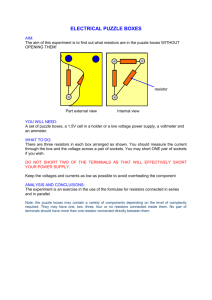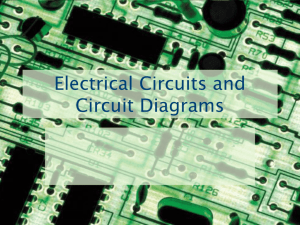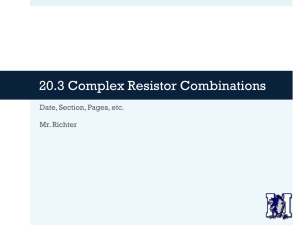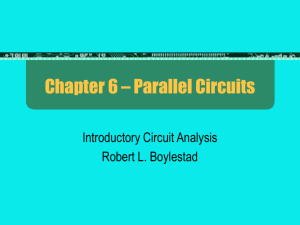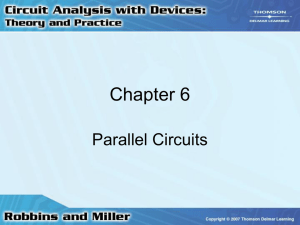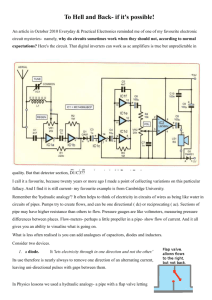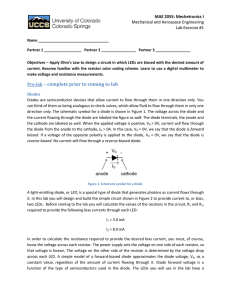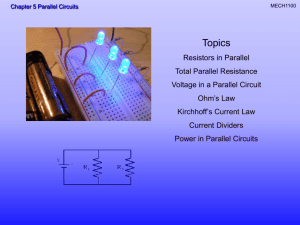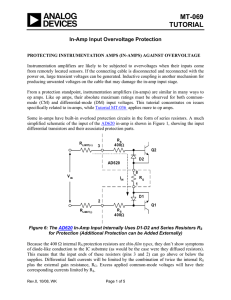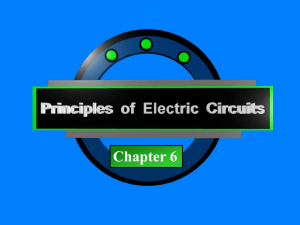Ohmic components in series
advertisement
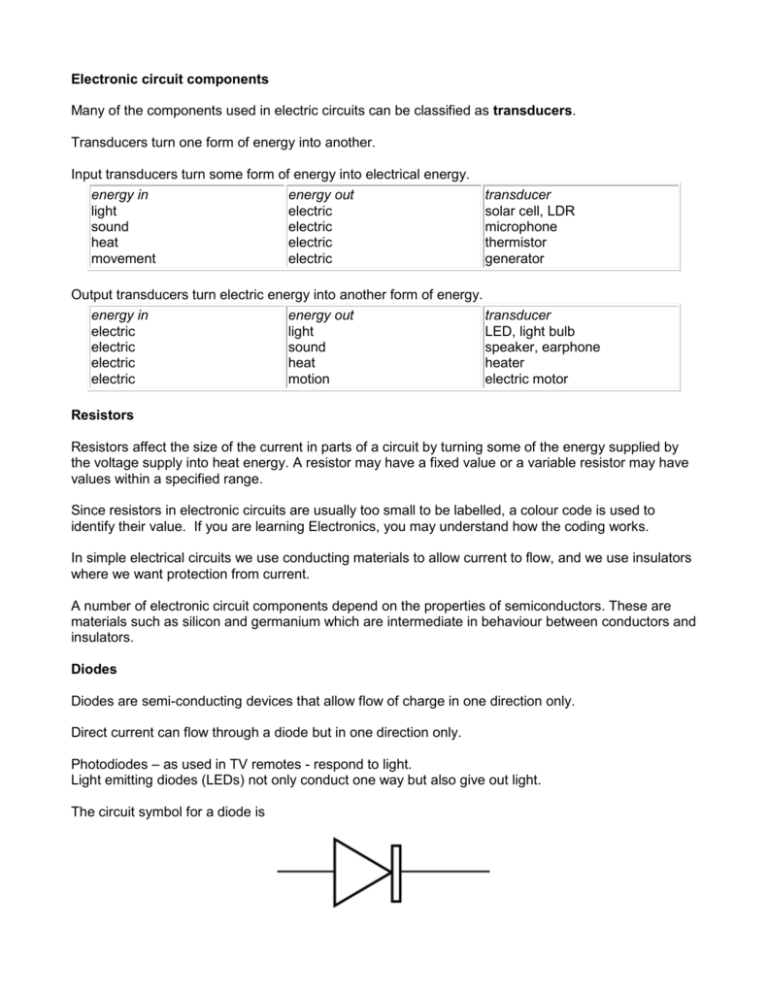
Electronic circuit components Many of the components used in electric circuits can be classified as transducers. Transducers turn one form of energy into another. Input transducers turn some form of energy into electrical energy. energy in energy out light electric sound electric heat electric movement electric transducer solar cell, LDR microphone thermistor generator Output transducers turn electric energy into another form of energy. energy in energy out transducer electric light LED, light bulb electric sound speaker, earphone electric heat heater electric motion electric motor Resistors Resistors affect the size of the current in parts of a circuit by turning some of the energy supplied by the voltage supply into heat energy. A resistor may have a fixed value or a variable resistor may have values within a specified range. Since resistors in electronic circuits are usually too small to be labelled, a colour code is used to identify their value. If you are learning Electronics, you may understand how the coding works. In simple electrical circuits we use conducting materials to allow current to flow, and we use insulators where we want protection from current. A number of electronic circuit components depend on the properties of semiconductors. These are materials such as silicon and germanium which are intermediate in behaviour between conductors and insulators. Diodes Diodes are semi-conducting devices that allow flow of charge in one direction only. Direct current can flow through a diode but in one direction only. Photodiodes – as used in TV remotes - respond to light. Light emitting diodes (LEDs) not only conduct one way but also give out light. The circuit symbol for a diode is Diodes will conduct in the direction of the arrow but not in the other direction (we are talking about conventional current here). The diode has many uses. One of the most important is in rectifier circuits. These are circuits which convert AC (alternating current) into DC (direct current). Diodes are non-ohmic so the graphs of V-I are non-linear for a certain range of values. A diode that is forward bias so that electricity will conduct will only conduct electricity after the voltage across it has exceeded a certain value – typically 0.6 V. Resistors in series In a series circuit, the current is the same through all the resistors. The voltage across each resistor depends directly on the resistor value. The bigger the resistor is, the greater the voltage across it. The total resistance is the sum of the values of each of the resistors. Resistors in parallel In a parallel circuit, the voltage is the same for all the resistors. The current through each resistor depends inversely on the resistor value. The smaller the resistance value is, the greater the current passing through it. The total resistance is the reciprocal of the sum of the reciprocal values of the resistors. Complex circuits Complex circuits contain sections of parallel and series. Their solutions normally involve at least two steps. Power Conductors allow the flow of charge. A current in a When current flows in a circuit, energy is transferred. The rate of transfer depends on the number of charges flowing in one second and the quantity of energy each charge carries. Rate of energy transfer = power in watts (or joules per second). power = energy / time =VQ/t =VI Anything which resists current flow, loses energy. This energy is lost in the form of heat. The power wasted is found using: P = I2 R (watts)








